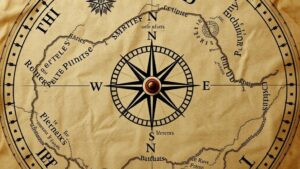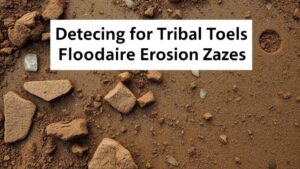Detecting Near Historical Church Ruins for Religious Relics and Offerings
Detecting Near Historical Church Ruins for Religious Relics and Offerings
The exploration of historical church ruins for the discovery of religious relics and offerings is a meticulous and rewarding pursuit that combines archaeology, history, and cultural anthropology. As spiritual artifacts can provide invaluable insights into the past, understanding the processes, tools, and ethical considerations involved in such undertakings is essential. This article delves into the methodologies for detecting these sites, the significance of the relics uncovered, and relevant case studies that illustrate successful endeavors.
The Importance of Historical Church Ruins
Historical church ruins are paramount for their spiritual and cultural significance. often serve as remnants of a communitys faith and history, providing a tangible connection to past religious practices and beliefs. According to the World Monuments Fund, numerous churches globally have endured the ravages of time, war, and neglect, making their study crucial for understanding local and global religious evolution.
Methods of Detection
Various methodologies are utilized to detect church ruins and analyze surrounding areas for artifacts. These methods can be grouped into non-invasive and invasive techniques:
- Geophysical Survey: Tools such as ground-penetrating radar (GPR), magnetometry, and resistivity surveys allow archaeologists to identify subsurface anomalies associated with church foundations or burials without disturbing the site.
- Remote Sensing: Aerial photography and satellite imagery can reveal site layouts and even detect subtle topographical changes that indicate the presence of ruins.
- Surface Survey: Systematic inspection of the ground surface in a designated area can yield artifacts like pottery shards or metal items, which can suggest the proximity to church ruins.
Tools for Artifact Recovery
When conducting excavations near church ruins, a variety of tools are employed to recover artifacts without causing damage:
- Hand Tools: Trowels, brushes, and small shovels allow for careful excavation of sensitive areas.
- Metal Detectors: Essential for locating metal relics, especially in historical contexts where offerings might have included such materials.
- Data Recording Equipment: GPS devices and digital cameras are crucial for documenting the context of findings accurately.
Case Studies and Real-World Applications
Several successful archaeological projects have demonstrated effective strategies for locating religious relics near church ruins:
- The Excavation of St. Michaels Church, Germany: This site yielded numerous medieval relics, including crucifixes and chalices, by employing a combination of GPR surveys and targeted excavations in areas suspected to hold graves.
- The Discovery of the Reliquary at St. Sava, Serbia: The integration of surface surveys and metal detection led to the discovery of a reliquary containing remains presumed to belong to an important religious figure, paving the way for further historical research.
Ethical Considerations and Best Practices
Engaging in archaeological work on historical church ruins necessitates a strong ethical framework. Considerations include:
- Permits and Licenses: Always obtain necessary permissions from local authorities and religious institutions before commencing any excavation.
- Community Engagement: Involving local communities can foster respect for cultural heritage and promote stewardship.
- Proper Documentation: Meticulously document all findings to preserve historical context and facilitate future research.
Potential Questions and Concerns
Individuals interested in this field might have several concerns:
- What if human remains are discovered? Protocols exist to handle such situations respectfully and legally, often involving archaeologists and local authorities.
- How can findings contribute to current understandings of history? Artifacts recovered can provide new insights into past religious practices, economic conditions, and social structures.
Conclusion
Detecting historical church ruins for religious relics and offerings is a complex discipline that demands thorough preparation, ethical consideration, and respect for the artifacts uncovered. As the study of such historical sites expands, so does the potential for gaining profound insights into the religious and cultural frameworks of previous generations. Future endeavors should prioritize collaboration with local communities, use advanced technology, and uphold a commitment to preserving our shared heritage.
Actionable Takeaway: For those interested in pursuing archaeological exploration, consider engaging with local historical societies, attending workshops on archaeological methods, and volunteering for excavation projects to gain practical experience and knowledge in the field.



